► New Peugeot 508 SW review
► We drive smart new estate
► Could it tempt you out of SUVs?
Change might be afoot. Jean-Philippe Imperato, Peugeot’s CEO, thinks so anyway, despite riding high on the success of the 3008 and 5008 SUVs. ‘Sales of SUVs are slowing down in Europe,’ he says, ‘because buyers are having environmental concerns. So they need estate cars again. The estate car is back.’ In particular, the new Peugeot 508 SW.
Makes sense. An estate car is typically lighter than an SUV and has a smaller frontal area. Now, more change. Perhaps buyers are bored with the endless default-choice premium Germans and would like something obviously different, while still able to meet their needs and aspirations. ‘The best way to win the competition is to avoid the competition,’ says Gilles Vidal, Peugeot’s design director. ‘And if we keep the design simple, it will be timeless. If there’s too much going on, it will age.’
The 2019 Peugeot 508 SW is the result of this thinking. It’s intended to sidestep the premium hegemony, offering a different sort of ‘premium’ while also appealing to the so-called mainstream market which, as far as estate cars are concerned, is nowadays probably no bigger than the premium one anyway. In this ‘D’ segment, more estate cars than saloons are sold across Europe, especially in Germany, but this time Peugeot is not chasing sales volumes with the residual-value damage that such a strategy inflicts.
So that’s why the new Peugeot 508 SW exists. What is it, then?
The 508 Fastback (saloon-shaped but actually a hatchback) has already garnered far more critical approval than the previous-generation 508 ever managed. Crisp looks, the best interpretation yet of the ‘i-Cockpit’ interior, credible quality, decent driving dynamics and an impressive equipment list are why, and the SW builds on that promising base.
Peugeot 508 Fastback review
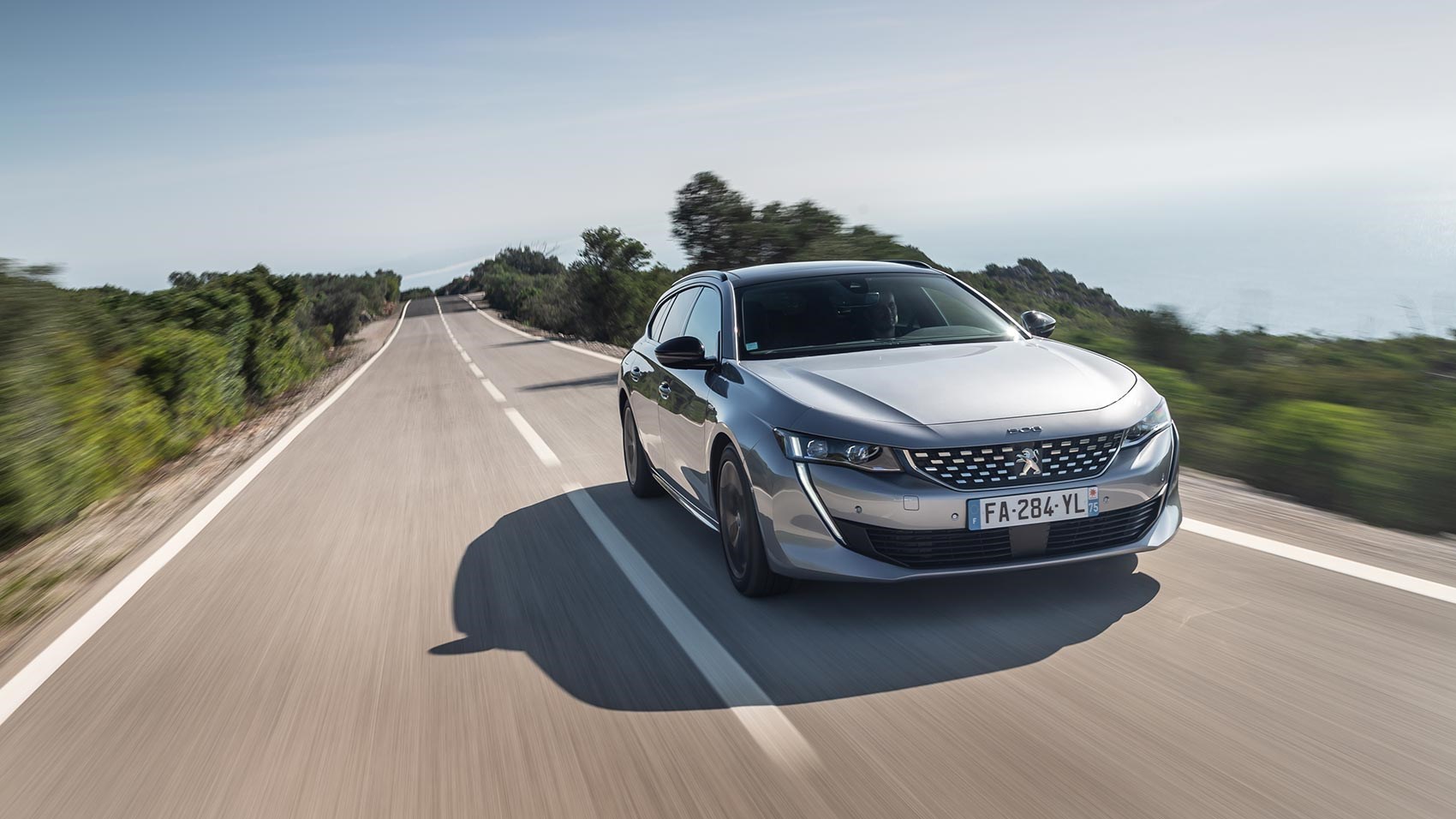
Peugeot, like several other manufacturers, reckons that estate cars in this size class are bought as much for reasons of style as for practicality, which is why its cargo space – with rear seats in their normal position – is actually less than in the Peugeot 308 SW from the size class below. Much greater rear legroom and a low roofline are the causes, although the latter is fractionally loftier than the very low roof of the Fastback. Overall the SW is 40mm longer than the Fastback but its wheelbase is the same.
The SW of course shares the Fastback’s dramatic nose, with its vertical-slash daytime running lights which change colour to function as indicators when needed, its crisp edges and its refreshing lack of the cliché that separate brake-cooling ducts, be they real or fake, have become. Also shared are the side view’s key features, the ridge motif sweeping around the door handles and the frameless door glass, an upmarket feature which allows a 25mm lowering of the roofline for a given size of door aperture.
The rear view mirrors the simplicity of the nose, and its avoidance of visual cliché, by having a continuous black-tinted strip across the tail incorporating highly sculpted tail-lights. The tailgate is powered, with the usual option of remote operation by sweeping a foot under the bumper.
Inside the 508 SW interior: luxury car or load-lugger?
As far as its occupants are concerned, the SW is almost exactly like the Fastback except for one vital difference: its cabin is a lot airier, so rear passengers feel less hemmed-in and the driver gets a better view aft through the bigger rear window.
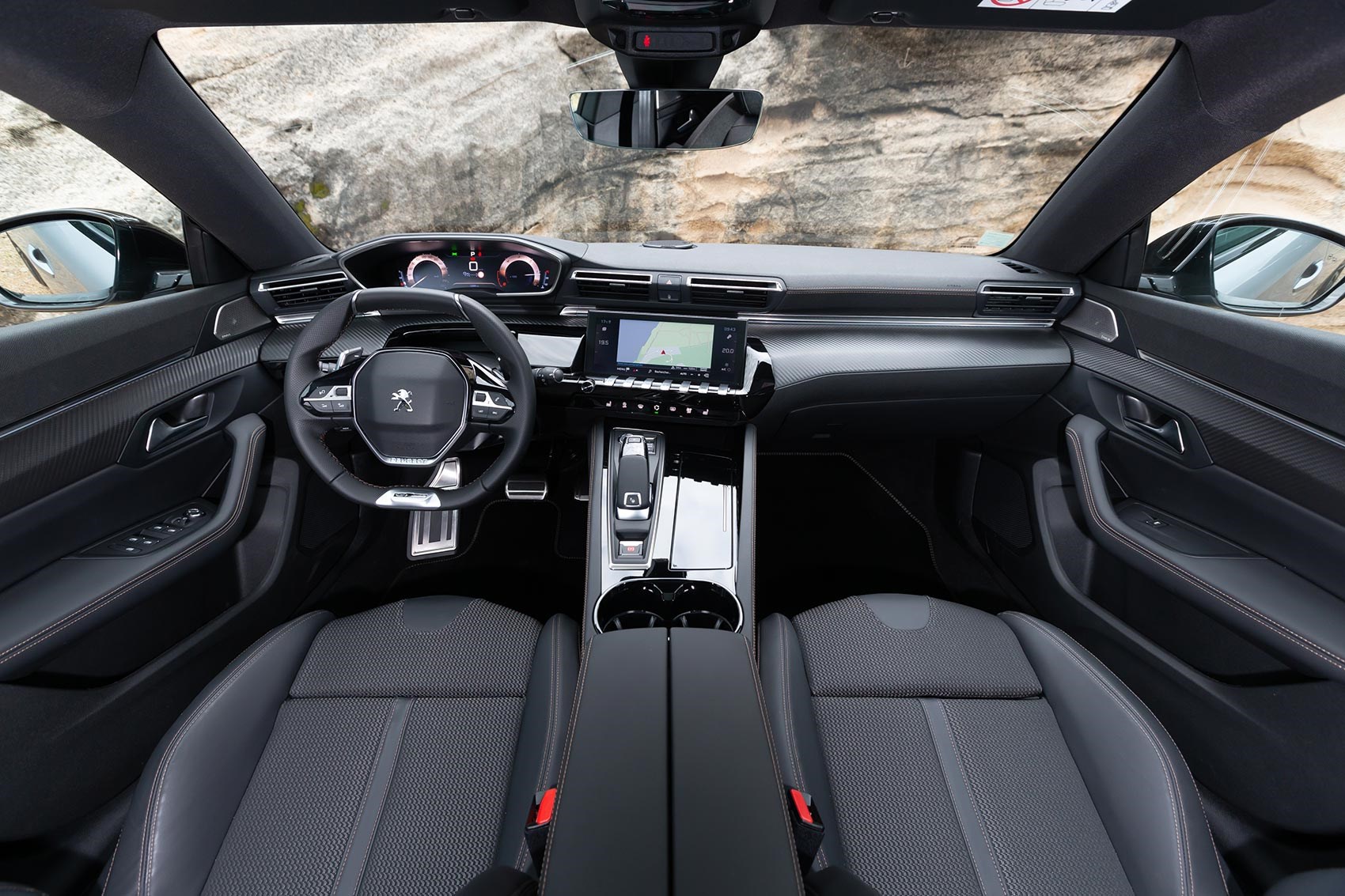
So the horizontally-themed dashboard, with its high-mounted TFT-screen instrument display, its central screen with a row of quick-access toggle switches below, the high and sloping centre console and the tiny, low-mounted steering wheel are as already experienced in the Fastback. So are the ambient lighting strips and the sense of convincingly premium quality, especially in the seat coverings of the upmarket versions.
The low steering wheel, with instruments visible above rather than through it, is easy to acclimatise to and adds to the sense of space around it. The result is a driving position unusually laidback for a car not deliberately intended to be sporting, the top models’ GT or GT-Line badging notwithstanding, but still very comfortable.
The instrument displays are configurable in several variations of presentation, information and colour, including a mirroring of the sat-nav screen. And right-hand drive versions have only half a usable glovebox, an unforgiveable, PSA-specific aberration which has been inflicted on us for far too long.
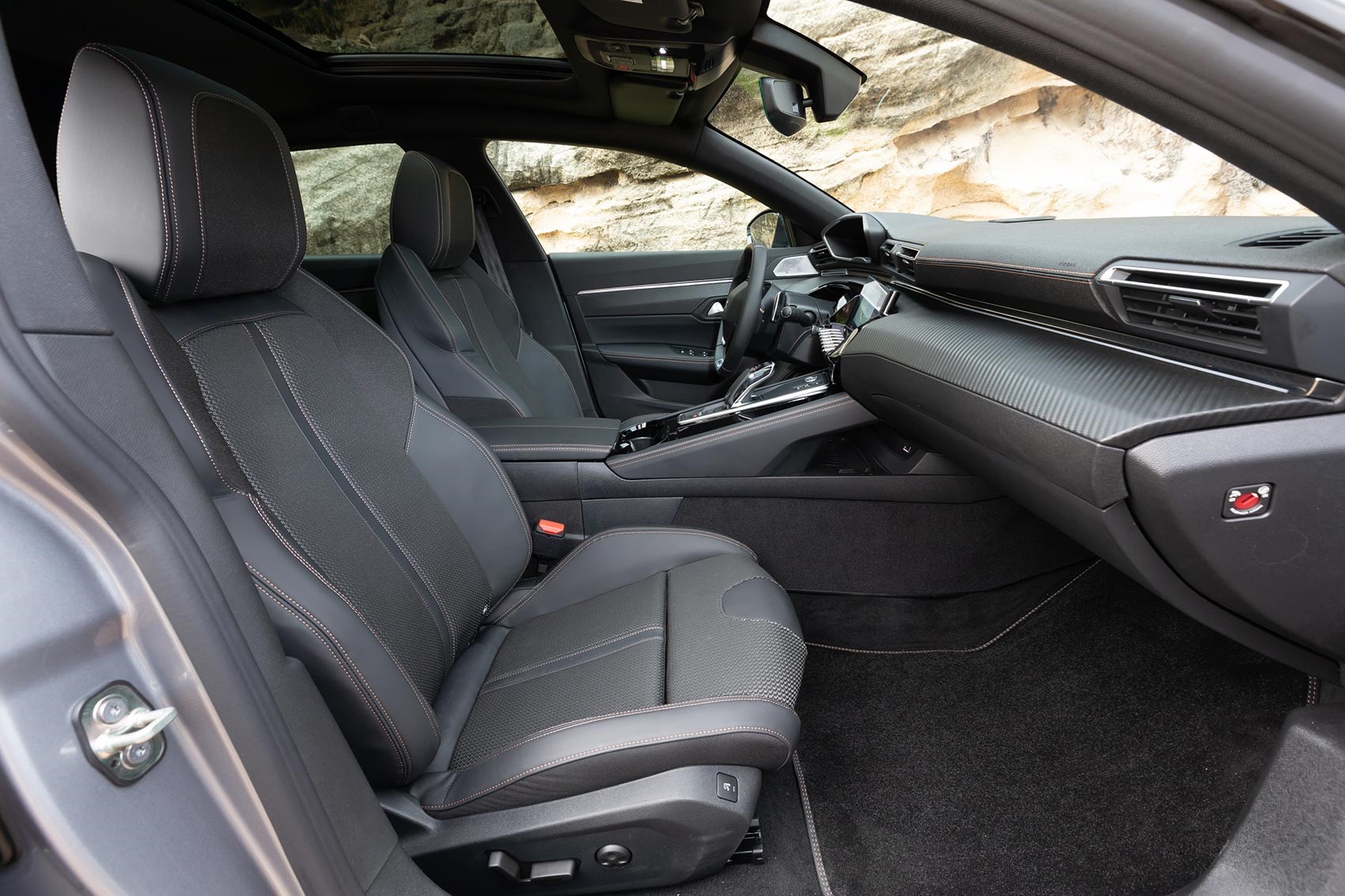
Rear-seat space is ample, boot space is sufficient to make the SW a useful family load-carrier. There’s 1780 litres of cargo space with the seats folded, but as is usual nowadays the rear seat cushions stay fixed and the backrests fold down on top of them. That makes for less load height than estate cars had in days gone by, further reduced by the way the backrests don’t fold completely flat but instead give a slightly sloping floor. Part of the reason for quite a high rear load platform is to make room for the battery of the plug-in hybrid version, to be launched in the next few months.
The best hybrid cars: our pick of the best plug-ins and hybrids
An extra-luxurious Peugeot 508 First Edition version will include a boot floot in Zebrano wood.
What’s the Peugeot 508 SW like to drive?
There are no revelations here – it feels almost exactly the same as the Fastback, even allowing for slightly stiffer rear suspension to compensate for the extra rear bodywork and the likelihood of heavier loads. That means the same excellent body control in fast bends and over big undulations, and a similar tendency to firmness over bumps and ripples.
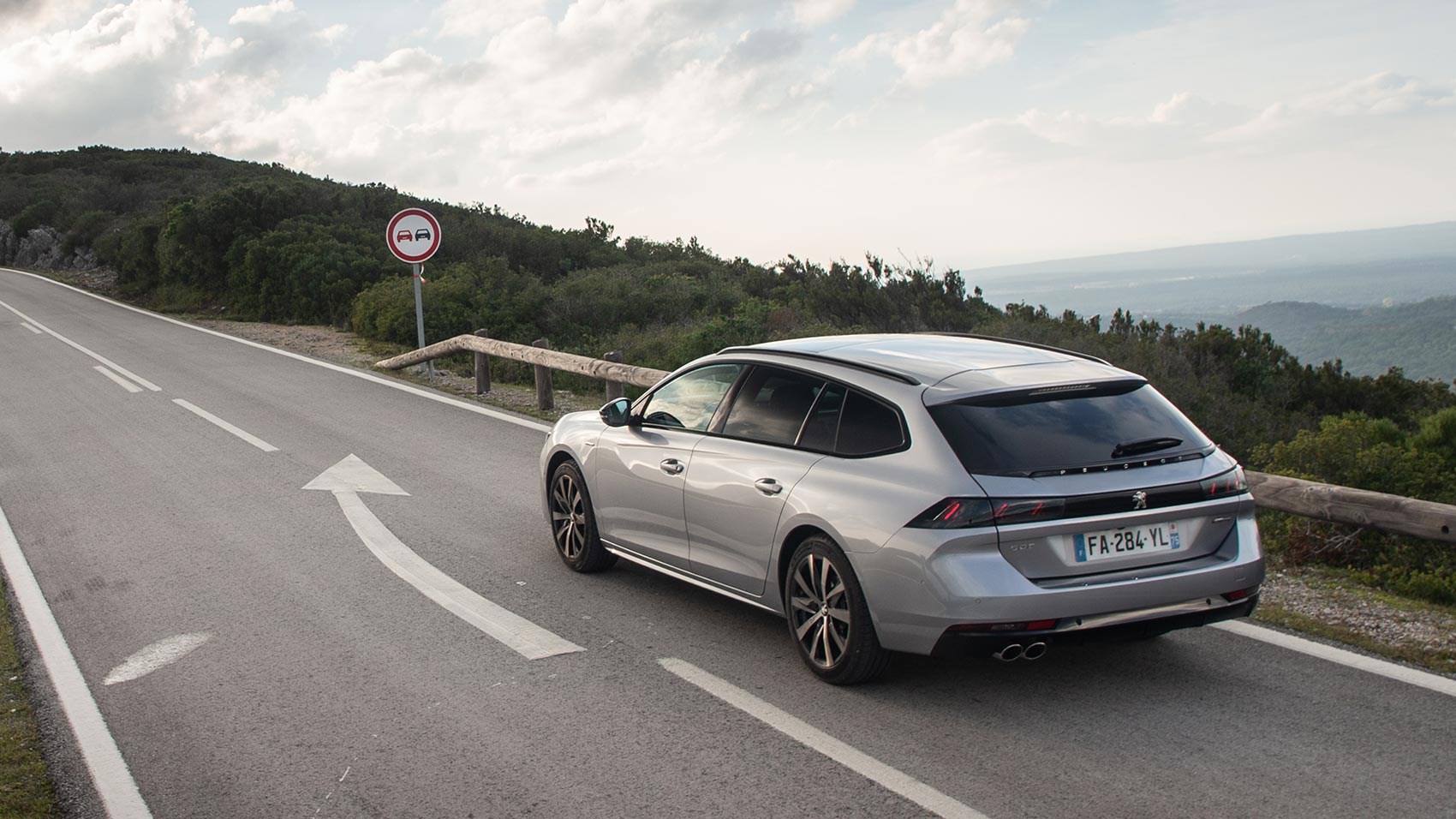
It also means the same darty steering response until you get used to the small movements required by the tiny steering wheel, and to the lack of true road feel that’s the result of the high power assistance needed to compensate for the small wheel’s lack of leverage. Once you’re in tune with it, though, which doesn’t take long, you’ll discover surprising agility and an impressive resistance to understeer.
The engine range is exactly the same as the Fastback’s, with two 1.6-litre, turbocharged petrol engines of 179 or 221bhp, a 1.5-litre turbodiesel with 129bhp, and a 2.0-litre turbodiesel with 161 or 179bhp. All come with an eight-speed automatic transmission; the smaller diesel, alone, can also be had with a six-speed manual. With so many gears, every ratio is always somewhere in the meat of the broad torque curve and you’re seldom left gasping as the turbo spins up to speed. Intervening manually with the paddle-shifts is largely pointless, though occasionally pleasurable.
The 221bhp petrol engine makes the SW a lively machine, impressively so for 1598cc and 1500kg, yet it’s surprisingly frugal with just 132g/km of CO2 recorded even under the new, stricter WLTP rules. But even with the lowliest, smallest diesel – an oddly growly unit at certain speeds – this hefty estate car doesn’t feel under-engined. This 100g/km CO2 engine, and the 179bhp petrol motor, are likely to be the biggest sellers; Peugeot hasn’t written-off diesel just yet.
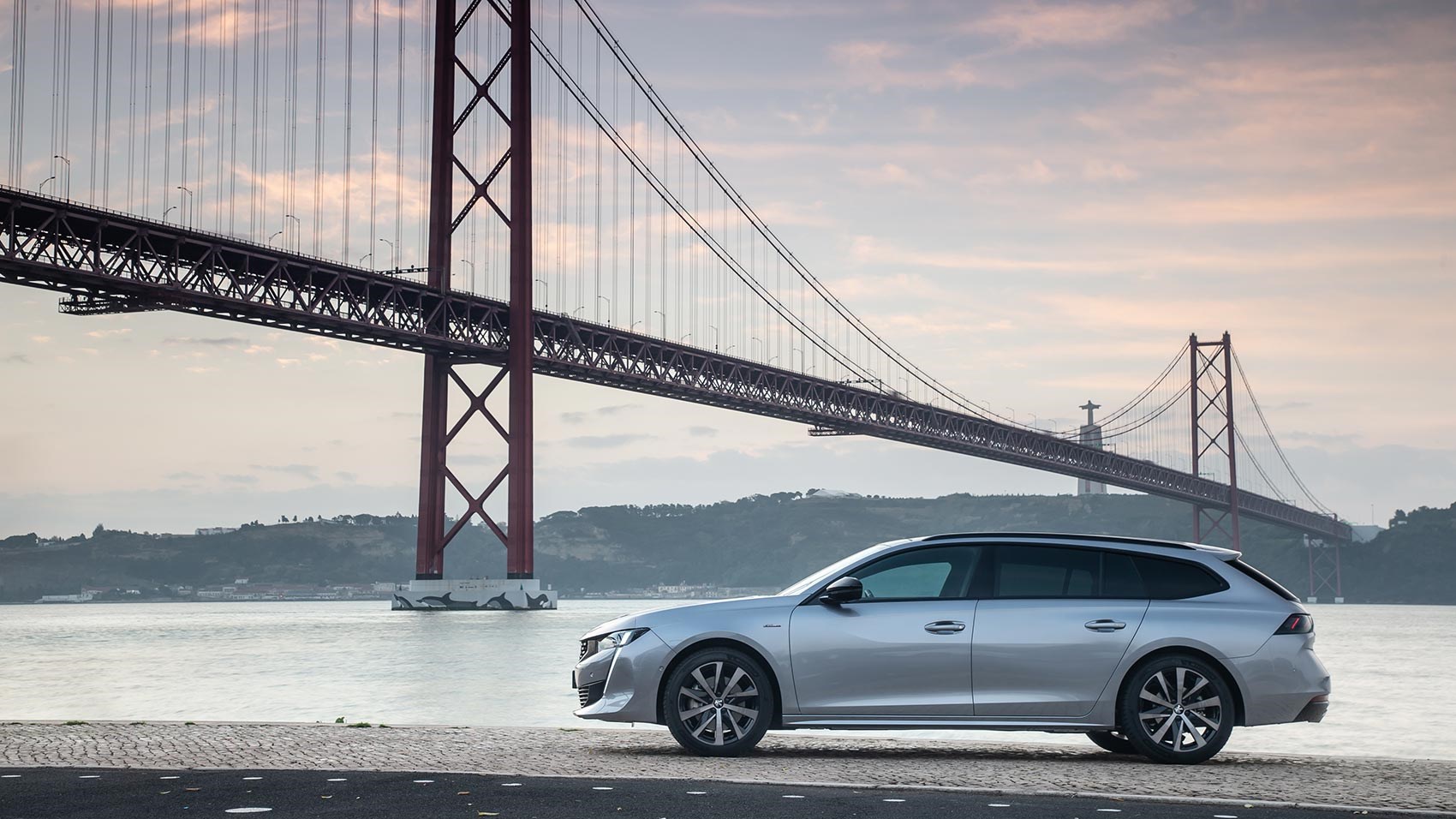
As with the Fastback, there’s a plethora of standard or optional safety systems including Night Vision – it uses infra-red radiation to spot pedestrians in the sensors’ line of sight – and a lane-keeping system which, irritatingly, illuminates a bright yellow warning light in the instrument panel even if you’ve disabled it, having got tired of the steering wheel’s tugging on a narrow, twisty road.
Verdict
The Peugeot 508 SW is an unusually good-looking estate car with the extra merit of being instantly recognisable among the hordes of brand-themed German rivals. It virtually matches them for cabin quality and driving abilities, beats most of them for standard equipment and should undercut them on price, given Peugeot UK’s guide pricing of £1600 over the cost of a same-engine, same-trim Fastback.
Most of all, though, the 508 SW dares to be different and pulls it off. We admire it for that.
508 SW prices are likely to range from £26,600 to £39,000 when UK sales start in spring 2019.
More Peugeot reviews by CAR magazine